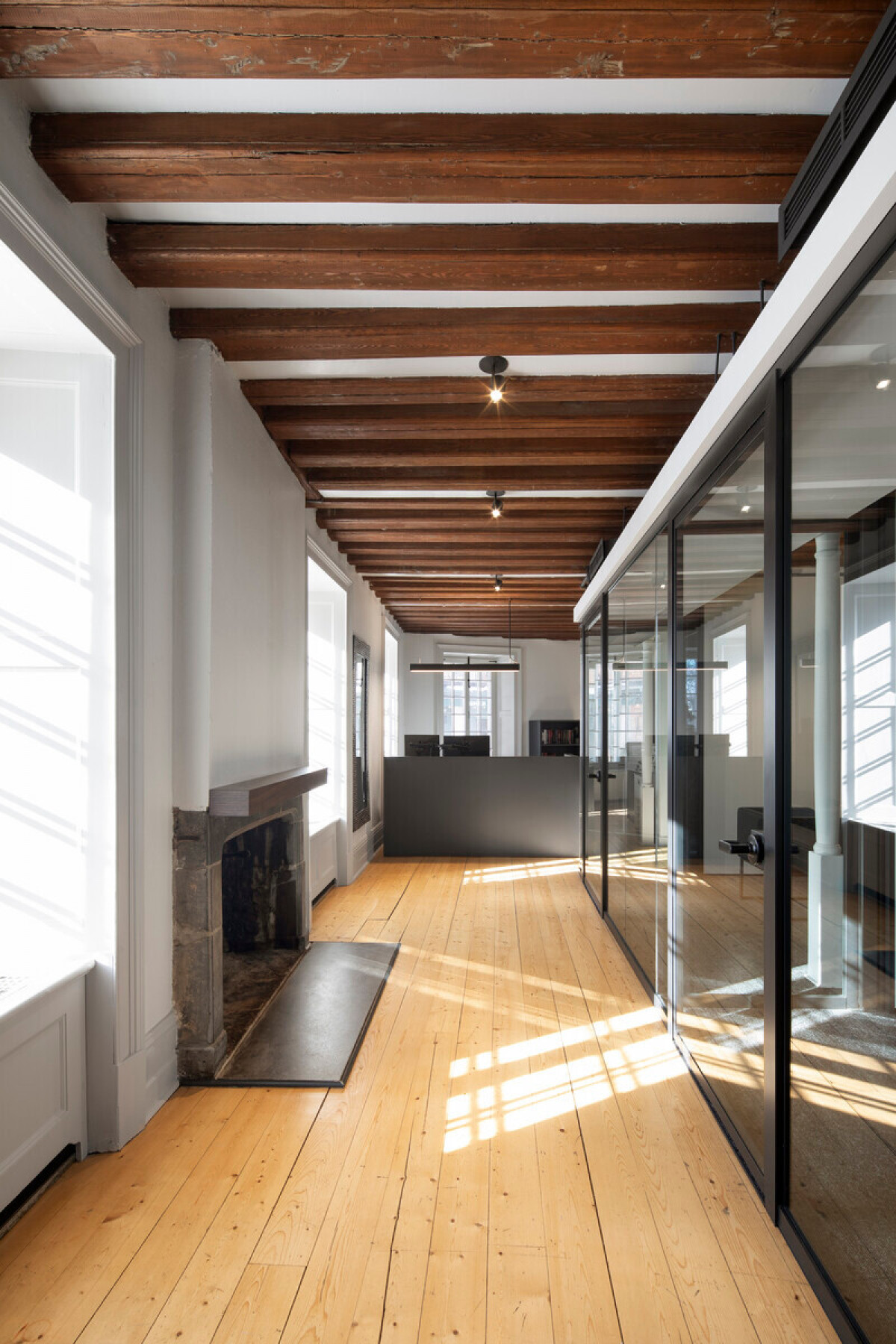20 Nov 2024

Since its construction in 1752, Maison Jean-Baptiste-Chevalier has been transformed many times over the ages. It was initially an important place of trade for New France due to its strategic location near the river. It was subsequently transformed into a renowned hotel during the 19th century, and in more recent years was used as a cultural space affiliated with the museum. In 1956, its restoration marked the start of the ambitious reconstitution project of Place-Royale, a fictive reconstitution with a stylistic and historic approach to the French regime in Quebec City.
In 2021, Maison Chevalier was acquired with the intent to ensure the perennity of the building and the site by establishing administrative offices on the top floors, while maintaining the vaults accessible to the public. This concern for preserving the historic building through its values and architecture immediately compelled the team of Anne Carrier Architecture to work on the project with a minimalist architectural approach that relies on respect and highlights the different interior elements of interest.
The interior design strategy aims to preserve the authenticity, integrity, and richness of the historic elements. Thus, the decision to have an open floor plan allows for the elements of historic interest to be seen from every point of view by both employees and visitors. The circulation along the exterior walls, with the desks judiciously positioned away from the walls, enables natural light to enter evenly in all the different spaces.
This rehabilitation project’s concept is reversibility, which means the interior configuration can be easily changed to its original state with the help of movable interior walls. This allows for greater flexibility while preserving the existing construction system of the building. Long, floating bands were used to hide the mechanical elements and to facilitate the installation of the new interior walls, while obtaining a harmonious, esthetic, and respectful historic integration. These floating ceiling bands offer intimate working spaces with better acoustics while expressing, with simplicity, the connection between the old and the new.
The outdated elements of Maison Chevalier that had no historic value were replaced with new elements chosen for their integration, functionality, durability, and design aesthetic. The building's exterior was left untouched during the project, although future maintenance work is planned to maintain its existing appearance. The discreet and respectful rehabilitation approach offered new interior spaces adapted to today’s needs while preserving the spirit of this special place dating back to the early 17th century.
Technical sheet